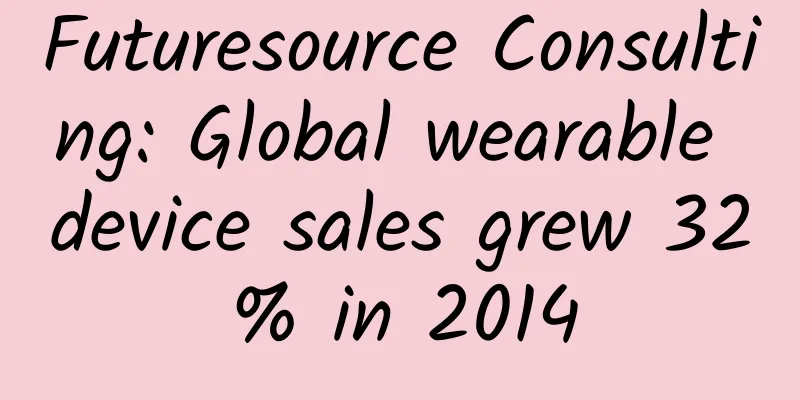Futuresource Consulting: Global wearable device sales grew 32% in 2014

|
199IT original compilation Whether the wearable device market will see huge growth in 2015 remains to be seen, but an Ipsos survey in October 2014 found that wearable devices have better development prospects than other technologies next year. Nearly one in five online Americans plan to buy a wearable device in the next 12 months. That number still lags behind traditional connected devices like smartphones, tablets and laptops by at least 9 percentage points, but is ahead of streaming devices and 4-K TVs (ultra-high-definition televisions). Who are the potential customers for wearables? No doubt: young consumers. 19% of respondents plan to buy a wearable fitness monitor, compared to 31% of those aged 18 to 34. By contrast, less than 15% of older respondents are interested. The same is true for wearable computers: 13% of respondents are interested in buying a wearable computer, but a quarter of millennials plan to buy one in the next year. Male and female consumers are evenly split when it comes to wearable fitness trackers, but for other wearables, men are more than twice as likely as women to be interested. The index shows that both sales and usage of wearable devices have grown strongly this year. In November 2014, Futuresource Consulting predicted that global sales of wearable devices would grow 32% year-over-year to 52 million units this year. In September 2014, Forrester Research predicted that 25% of American Internet users would use wearable devices this year, compared to 14% in 2013. However, forecasts for this emerging market vary widely. Take smartwatches, for example. In September 2014, Generator Research predicted that global smartwatch shipments would reach 5.8 million this year, and 313 million by 2020. A month later, Juniper Research predicted that global smartwatch shipments would reach 1 million in 2014, and 36 million by 2018. The difference is mainly due to different definitions and devices covered, but it also shows that marketers and advertisers need to consult a wider range of wearable device indices when dealing with the market. Compiled from: eMarketer Translator: Sun Ying |
<<: comScore: iPhone's US smartphone market share increased to 43.5% in March-May 2015
>>: Facebook Messenger reaches 1.2 billion monthly active users
Recommend
Anesthesia: The invisible force that protects life safety
Author: Wu Ping, Jingmen Central Hospital, Hubei ...
What's wrong with a 17-year-old girl's irregular menstruation?
In our daily lives, many 17-year-old girls experi...
Breast pain after menstruation
All women will experience a physiological process...
Endometrium 13mm but no period
Under normal circumstances, before a woman's ...
Will wearing leather pants cause gynecological inflammation?
Many girls like to wear leather pants. Leather pa...
Can I do eyebrow tattoos while breastfeeding?
Love of beauty is a woman’s nature. If you cannot...
Mole diagram on a woman's left hand
What are the names of moles on a woman’s left pal...
Moxibustion to remove uterine fibroids
Uterine fibroids are the most common tumors in th...
Treatment of rectouterine pit
Rectal indentation is a major concern for our fem...
Can breast hyperplasia cause irregular menstruation?
I believe that many people will encounter breast ...
Can I have a painless abortion if I am more than two months pregnant?
Some things will never go as planned. For many co...
What causes a bad cervix?
Women may suffer from various cervical diseases, ...
What is the pink color of vaginal discharge before menstruation?
Recently, one of our friends sent us an email, sa...
Introducing the causes of spotting after pregnancy
Let me introduce to you the reasons for spotting ...









